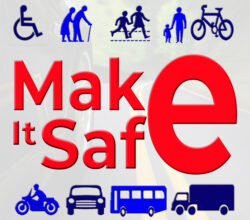Safety for adult passengers
Adults are responsible for their safety and the safety of other passengers.
As an adult driver, you are responsible for the safety of all passengers. Equally, as an adult passenger in any vehicle, you must take personal responsibility for your safety. That means always wearing your seat belt correctly and securing loose items in your vehicle that could cause harm in a collision.
Ensuring Safety for Adult Passengers in Vehicles
When travelling as an adult passenger in a vehicle, there are several steps you can take to prioritize your safety and reduce the risk of injuries. Whether you’re commuting to work or going on a road trip, consider the following guidelines:
1. Buckle Up: Always wear your seatbelt correctly before the vehicle starts moving. Ensure that the lap belt is positioned low across your hips, snugly against your upper thighs, and the shoulder belt crosses your chest and rests comfortably between your shoulder and neck. Proper seatbelt usage significantly reduces the risk of injuries in the event of a collision.
2. Sit in a Safe Position: Choose a seating position that provides the best safety and comfort. If possible, sit in the backseat as it offers better protection than the front seat. Adjust your seat to an upright position with the headrest aligned with the top of your head.
3. Avoid Distractions: Minimize distractions inside the vehicle that can divert your attention from the road. Avoid using your mobile phone, eating, or engaging in activities that take your focus away from the driver and the road ahead.
4. Follow Traffic Laws: Observe and comply with all traffic laws, including speed limits, traffic signals, and road signs. Cooperate with the driver and encourage them to practice safe driving behaviours.
5. Be Mindful of Airbags: If you are sitting in the front seat, be aware of the airbag systems in the vehicle. Adjust your seat to maintain a safe distance from the airbag compartment and follow the vehicle manufacturer’s guidelines regarding airbag deployment and seating position.
6. Communicate with the Driver: Maintain open communication with the driver, especially if you have any concerns or feel uncomfortable during the journey. Request the driver to adjust driving behaviours, such as reducing speed or avoiding aggressive manoeuvres if necessary.
7. Plan for Rest Breaks: During long journeys, plan for regular rest breaks to stretch your legs, use the restroom, and reduce fatigue. Prolonged periods of sitting can lead to discomfort and decreased alertness, so it’s important to take breaks and rejuvenate.
8. Report Vehicle Issues: If you notice any vehicle malfunctions or safety concerns, inform the driver promptly. Examples include unusual noises, warning lights, or problems with brakes, tires, or lights. Maintaining a well-maintained vehicle is crucial for everyone’s safety.
9. Be Prepared for Emergencies: Familiarize yourself with emergency procedures and the location of safety equipment such as first aid kits, fire extinguishers, and emergency exits in the vehicle. Keep important contact numbers, including emergency services, readily accessible.
10. Respect the Driver’s Authority: Recognize that the driver has the responsibility to operate the vehicle safely. Refrain from distracting or criticizing the driver, as it can compromise their attention and judgment, leading to potential risks.
By following these safety guidelines, you can contribute to a safer travel experience for yourself and other passengers. Remember that road safety is a shared responsibility, and everyone plays a role in promoting a secure environment while on the road.
![]()
